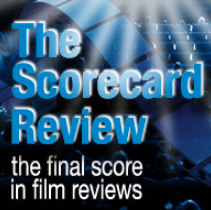Chicago International Film Festival 2011
The Artist Directed by: Michel Hazanavicius Cast: Jean Dujardin, Berenice Bejo, and John Goodman Running Time: 1 hr 40 mins Rating: PG Release Date: TBD
CLICK HERE for complete coverage of the Chicago International Film Festival (CIFF 2011)
PLOT: A silent film star's fall coincides with the rise of a young actress whom he discovered. As their paths cross, an unlikely romance blossoms over the years.
WHO'S IT FOR? Fans of silent films will enjoy this homage and people who like the romances of old will appreciate the film.
OVERALL
We live in the day and age of the talkie. Few people can remember any other era. Going into The Artist it seemed like the film was attempting to remind people of another. Not simpler, not better, just different. But what actually makes The Artist so enchanting is that is never tries to be anything else. Yes, it’s true that it is a silent movie in the age of sound films, but it acknowledges the fact. In fact, it has fun with it.
The awareness of the modern age of film and how out of place The Artist seems to be almost feels like the biggest joke of the picture. There are countless moments when the complete lack of dialogue is played for a laugh, but it never feels tired. As the film trods on director Michel Hazanavicius constantly finds new ways to play it for a laugh. In one of the most memorable scenes of the movie, our protagonist is dreaming of the talkie pictures. For him, it is something to be afraid of, but for us as audience members, already well-acquainted with talking motion pictures, it cannot help but seem hilarious when his little Jack Russell terrier issues an overwhelming bark. While this delicate dance between humor and drama is certainly a testament to Hazanavicius’s talents as a director and writer, there is one other element of The Artist that is so breathtaking that the rest of the film seems to pale in comparison.
This is, of course, Ludovic Bource’s music. It was once said that movies were never truly silent. What they lacked in dialogue, they were forced to make up for with sweeping orchestral accompaniments that sold the audience on the emotion of the film. The Artist manages to do this with such mindboggling ease. Whether we are supposed to feel sad or happy, Bource’s score is there to remind us of the emotional significance. While some people might accuse the music of leading the story, with no real dialogue or delivery to help the audience, the music provides a much needed accompaniment to the actions of the film.
In the end, the story itself is nothing remarkable. It’s a fairly basic story of a man struggling to find his place in a changing world and the help of a good woman. It’s an enjoyable story for what it is, but it is by no means the major selling point of The Artist. That distinct honor belongs to the actual production of The Artist itself. Hazanavicius and his deeply talented team manage to create an impressive silent film in the day and age of the talkies. From the overly-exaggerated facial expressions of silent film to the all-encompassing music of the films, The Artist captures the silent film era with an elegance all its own.
FINAL SCORE: 7/10

